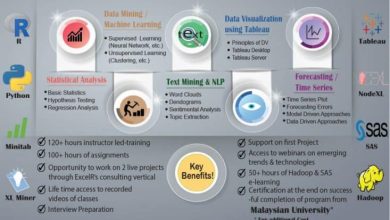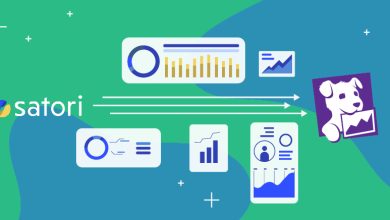Often abbreviated as “Generative AI,” Generative Artificial Intelligence is a field of artificial intelligence that aims to develop autonomous systems that can produce unique, inventive, material that resembles that created by humans. Unlike typical AI models, generative AI seeks to replicate human creativity and produce material on its own. It creates visually appealing and contextually relevant information by applying deep learning techniques like Transformers and Generative Adversarial Networks to extract patterns and contexts from large datasets.
This blog highlights the possible effects of generative AI on a range of industries and human-machine interactions, as well as the benefits of human-machine cooperation and the need for ethical and responsible integration into daily life.
How Does Generative AI Contribute to the Collaboration Between Humans and AI?
The journey of AI development has been a remarkable odyssey marked by ingenuity, persistence, and the pursuit of emulating human intelligence. The roots of AI can be traced back to ancient civilizations, where myths and legends often featured artificial beings, embodying mankind’s fascination with creating intelligent life. However, the modern era of AI development took shape in the mid-20th century.In the 1950s and 1960s, the foundational concepts of AI were established, including symbolic reasoning and problem-solving. Pioneers like Alan Turing and John McCarthy laid the groundwork for AI by proposing theories and developing early computer programs that demonstrated machine learning capabilities.
Advancements in AI Technology
Advancements in AI technology have been nothing short of extreme, particularly in the past few decades. The evolution of AI can be categorized into several key phases:
AI development in the 1970s and 1980s saw expert systems and rule-based programs simulate human expertise.
Machine learning emerged in the late 20th century, enabling AI systems to learn from data and make accurate predictions.
Big data led to AI breakthroughs, changing industries.
Deep learning, using deep neural networks, has become a leading AI paradigm, driving progress in image recognition, speech synthesis, and autonomous vehicles.
What is the Role of Generative AI in AI Development?
Generative AI stands at the forefront of AI development, playing a pivotal role in shaping the future of human-AI collaboration and the quest for artificial general intelligence (AGI). Generative AI encompasses a wide range of generative AI models, including Generative Adversarial Networks (GANs) and Transformers, which have changed the game of content generation and manipulation.
Generative AI enhances human creativity by enabling artists, professionals, and writers to generate content and assist in tasks like data augmentation.
Specialized AI development services are now available to leverage Generative AI’s capabilities, accelerating AI development across industries.
Generative AI contributes to the pursuit of artificial general intelligence by generating coherent and context-aware content, bringing us closer to creating AI systems that mimic human intelligence across domains.
Ethical concerns in Generative AI include content manipulation and misuse. Ethical frameworks and responsible practices are essential for AI development.
What are the Benefits of Collaboration Between Humans and AI?
Collaboration between humans and AI, often referred to as human-AI collaboration, offers a multitude of benefits and advantages in the field of AI development and its real-world applications. Here’s a detailed exploration of these advantages:
Human-AI collaboration combines creativity, emotional intelligence, and contextual understanding from humans with rapid data processing, precision, and scalability from AI.
Human-AI collaboration enhances decision-making across industries. AI offers data insights, while humans contribute judgment and ethics.
AI automates tasks, freeing workers for complex and creative tasks, boosting workplace efficiency and productivity.
AI integration reduces operating expenses by handling customer queries 24/7.
Personalization: AI and human collaboration offer customized customer experiences.
AI in Healthcare and Aviation aids risk mitigation by providing real-time data analysis, reducing human error.
AI aids in creativity by offering fresh perspectives for art, content, and product design
What are the Real-World Applications of Human-AI Collaboration?
Human-AI collaboration has rapidly emerged as a transformative force across various industries, revolutionizing the way we approach problem-solving, decision-making, and innovation. The fusion of human expertise with the capabilities of AI development services and Generative AI tools has led to remarkable real-world applications. Here, we explore some of these applications:
- Healthcare
- Diagnostic Assistance
- Drug Discovery
- Finance
- Algorithmic Trading
- Customer Service
- Manufacturing
- Collaborative Robotics
- Predictive Maintenance
- Customer Service
- Personalized Support
- Language Translation
- Education
- Personalized Learning
- AI Tutors
- Content Creation
- Text Generation
- Art and Design
- Transportation
- Autonomous Vehicles
- Traffic Management
- Space Exploration
- Data Analysis
- Robotics
How Will Human-AI Collaboration Change in the Future?
The future of AI development and collaboration between humans and AI systems holds immense promise and transformative potential. As we look ahead, several Generative AI trends are balanced to shape the scene of Human-AI collaboration:
AI generative tools will continue to advance, enabling machines to create high-quality content and revolutionizing creation.
AI development services will see increased demand as businesses look to leverage AI for automation, optimization, and innovation
AGI promises advancements in complex problem-solving, potentially revolutionizing fields such as healthcare, finance, and research.
Ethical frameworks in human-AI collaborations will become crucial. Responsible AI, privacy safeguards, and AI transparency are key to ensuring AI benefits society.
AI’s impact across industries: healthcare (better diagnostics, personalized treatments), finance (fraud detection, investment improvement).
AI will enhance human abilities by assisting in tasks, making workplaces more collaborative
Ethical Considerations in Human-AI Collaboration
The growth of Human-AI collaboration brings forth critical ethical considerations:
- Bias Mitigation: Ethical AI development will prioritize the mitigation of biases in AI algorithms, ensuring fair and unbiased decision-making across diverse populations.
- Data Privacy: Protecting individuals’ data privacy will remain paramount. Stricter regulations and robust data protection mechanisms will be implemented to safeguard user information.
- Transparency: AI systems must be transparent, providing explanations for their decisions. This transparency is crucial for accountability and user trust.
- Accountability: Establishing clear lines of accountability for AI systems’ actions will be essential. When AI is involved in critical decisions, responsibility must be clearly defined.
- Job Displacement: Addressing the potential displacement of jobs due to automation, retraining programs, and policies to support affected workers will be crucial.
Potential Impact of Human-AI Collaboration on Various Industries
The impact of Human-AI collaboration will vary across industries:
- Healthcare: AI will accelerate drug discovery, enhance diagnostics, and personalize treatment plans, improving patient outcomes and reducing healthcare costs.
- Finance: AI will enhance risk assessment, fraud detection, and investment strategies, making financial systems more efficient and secure.
- Manufacturing: Smart factories powered by AI will optimize production processes, leading to increased productivity and reduced waste.
- Education: AI-driven personalized learning platforms will cater to individual student needs, improving educational outcomes.
- Entertainment: Generative AI will transform content creation, enabling the production of highly customized and engaging media.
- Transportation: Self-driving vehicles and AI-optimized traffic management will improve road safety and reduce congestion.
Conclusion
In conclusion, a critical turning point in the development of artificial intelligence has been reached with the combination of generative AI and human-AI cooperation. The creation and manipulation of content is made possible by generative AI, which has the potential to revolutionize a number of sectors. The combination of human and artificial intelligence (AI) capabilities improves decision-making and transforms practical applications. Ethics continue to be of utmost importance, with a focus on ethical AI practices, accountability, and transparency. AI has the potential to shape a future where artificial intelligence fulfills human ambitions through customized experiences, collaborative workspaces, and sophisticated problem-solving.





